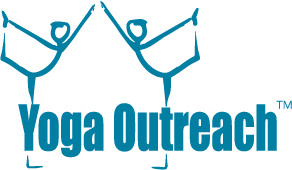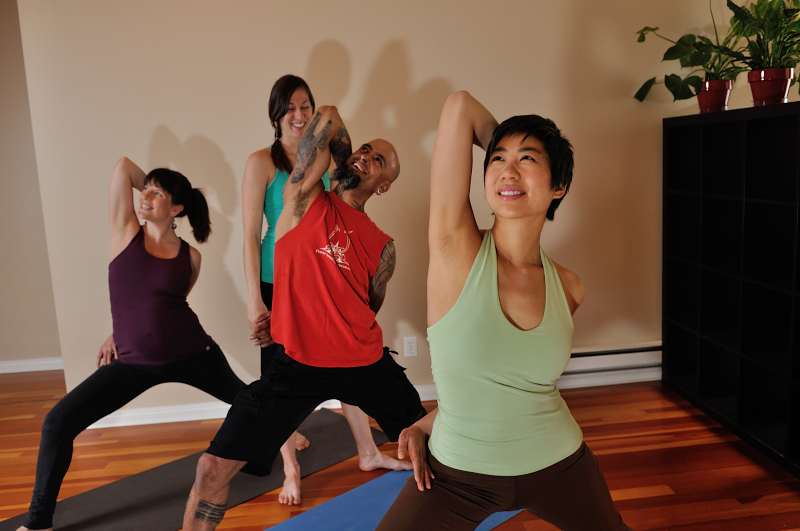Q and A with Julie Peters
In preparation for Yoga Outreach’s first conference (May 25), we asked the scheduled panelists what turns people OFF about yoga. Here’s a thoughtful response from Julie Peters, yoga teacher, writer, and owner of Ocean and Crow Yoga studio in East Vancouver.
YO: Can you smoke, drink, or eat McDonald’s, and still claim to practise yoga?
JP: Food and substances aren’t good or evil; the important thing to consider is why we are consuming them. Lately, I’ve been working a lot with the differences between desire and craving, pleasure and distraction. True desires move us forward in our lives, while cravings only feed themselves. Cravings work to keep us numb and still, while desires want us to evolve. Pleasures bring us into our bodies, allowing us to fully experience our feelings, while distractions help us escape the pain of our bodies. Smoking, drinking, and McDonalds could be pleasures or distractions, depending on our motivation or what we’re dealing with at the time.
The truth is, sometimes we need cravings and distractions. There’s a purpose to numbness and stillness. Sometimes we’re trying to survive something, and we need to freeze a little on the inside in order to get through the day. The danger, of course, is that these substances and behaviors might also damage us and are not sustainable in the longer term.
A yoga or meditation practice might support us enough to find healthier, more sustainable ways to survive whatever it is we’re going through. Yoga and mindfulness are tools to help us be alive, get through tough times, and manage stress, heartbreak, or trauma. Rejecting people from accessing a yoga practice because they are in survival behaviour means cutting them off from a tool that might help them need that survival behaviour less.
YO: Where did we get the idea that you need to be virtuous to do yoga?
JP: Yoga is often marketed as a lifestyle that goes along with diets and juice cleanses. Words like clean-eating, purifying, or detoxing imply that there are evil spirits to cast out by twisting ourselves into impossible shapes and going on liquid diets. This is a Westernization of classical Indian monastic practices, such as fasting and other purification practices, which were spiritual in nature, and not about losing weight.
YO: What if you take care of yourself physically, but inside you’re all anger, jealousy, and judgement?
JP: Different branches of yoga philosophy have different perspectives. One classical branch insists that emotions like desire, passion, and anger are impediments to spirituality; weaknesses of the body prevent us from accessing the Divine, which exists somewhere outside our bodies. But generally Tantra, another foundational philosophy of yoga, says the opposite: our emotions and bodies are gateways to the Divine. Working with our darkest emotions is key for helping us understand ourselves as manifestations of the Divine. From a Tantric perspective, pleasure, desire, anger, weakness, and even pettiness are aspects of the Divine. Stepping back and seeing that truth helps us consider how we are all connected.
YO: Isn’t the point of meditation to get rid of anger and other negative thoughts?
JP: Many philosophies of yoga talk about finding a distance from our fickle emotions through meditation practices. In the West, we think that means we’re not supposed to feel those emotions at all, particularly desire or anger. This is one of the poisonous interpretations that may have opened the door for abuses within some yoga systems. Anger is appropriate, for example, if someone is abusing you, or if you witness injustice against someone else. Being happy all the time is inappropriate in our complex and often unjust world. Setting boundaries and fighting for our own or someone else’s rights shouldn’t be seen as “non-yogic.”
Traditional meditative techniques aren’t about eradicating certain emotions, but about helping us see our emotions as temporary so we can work with them appropriately. The implication that we need to be pure and virtuous to practice yoga is a misunderstanding. At least, that’s my opinion, as a white Canadian woman who has done a lot of research but was not born into a Tantric or Hindu culture. Wherever we are coming from, we need to have humility when following a practice or a religious philosophy that we don’t access directly.
YO: What are some ways that you, as a studio owner, make your space welcoming to people that don’t fit the mainstream idea of yoga?
JP: My studio, Ocean and Crow, is an extension of my value set. When I write anything for the website, social media pages, or my column in Spirituality and Health magazine, I’m careful to use accessible language that really represents our message: “Yoga for real people.” It’s about yoga as a tool for managing our real lives, not some unattainable ideal that you have to be pure enough to reach.
I don’t hire teachers who don’t share my value set. It’s very important that everyone who works for me is body positive and open to teaching a range of people. Helen Camisa and I developed her Full Bodied Yoga workshop a few years ago, a class that specifically welcomes bigger-bodied people. I also taught a course called Feminist Yogi which explored cultural appropriation and abuses within the yoga system. I have Nicole Marcia teaching trauma-informed classes and teacher trainings at the studio which are more targeted to people overcoming trauma or mental health challenges.
The promotional images I choose really matter, too. Using photos of students instead of teachers lets me represent a wider range of ages, body sizes, and skin colors. I try to hire diverse yoga teachers, but it’s remarkably hard in an industry that is currently dominated by white women!
Another accessibility tool is financial assistance. My business partner Jane (who is also my mom!) and I always invite people to apply for assistance, so that the studio is not closed to people with financial hardship. It’s heartwarming to know that the people coming who can afford to pay are supporting students for whom cost is a barrier.
In general, it helped to get clear on our message and what is important to us. Everything we do, every post we write, every person we hire, has to represent those values. In my experience, we’ve really drawn a group of students who share those values and feel really comfortable in our space. It feels really good.
Interested in what Julie Peters has to say? She’ll be leading an online workshop about Mindful Sexuality on May 25. Proceeds will help us bring more yoga to folks living in mental health, recovery, and custodial service facilities.

Julie Peters is a writer and the co-owner of Ocean and Crow Yoga studio in Vancouver, BC with her mom, Jane. She writes a biweekly column on yoga and mindfulness for Spirituality and Health Magazine. She is the author of Secrets of the Eternal Moon Phase Goddesses: Meditations on Desire, Relationships, and the Art of Being Broken (SkyLight Paths 2016) and WANT: 8 Steps to Recovering Desire, Passion, and Pleasure After Sexual Assault (Mango Media April 2019). Learn more at jcpeters.ca

